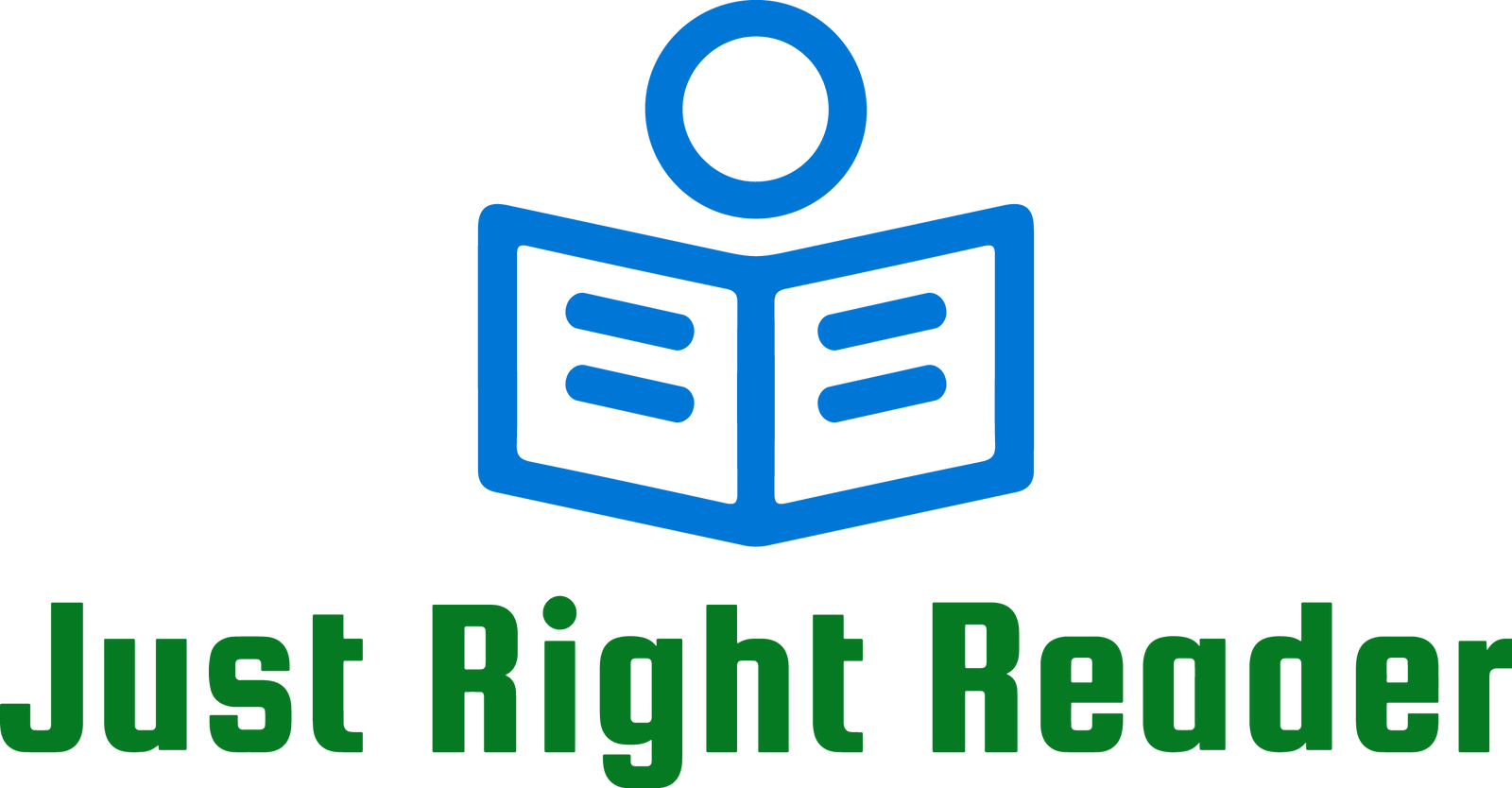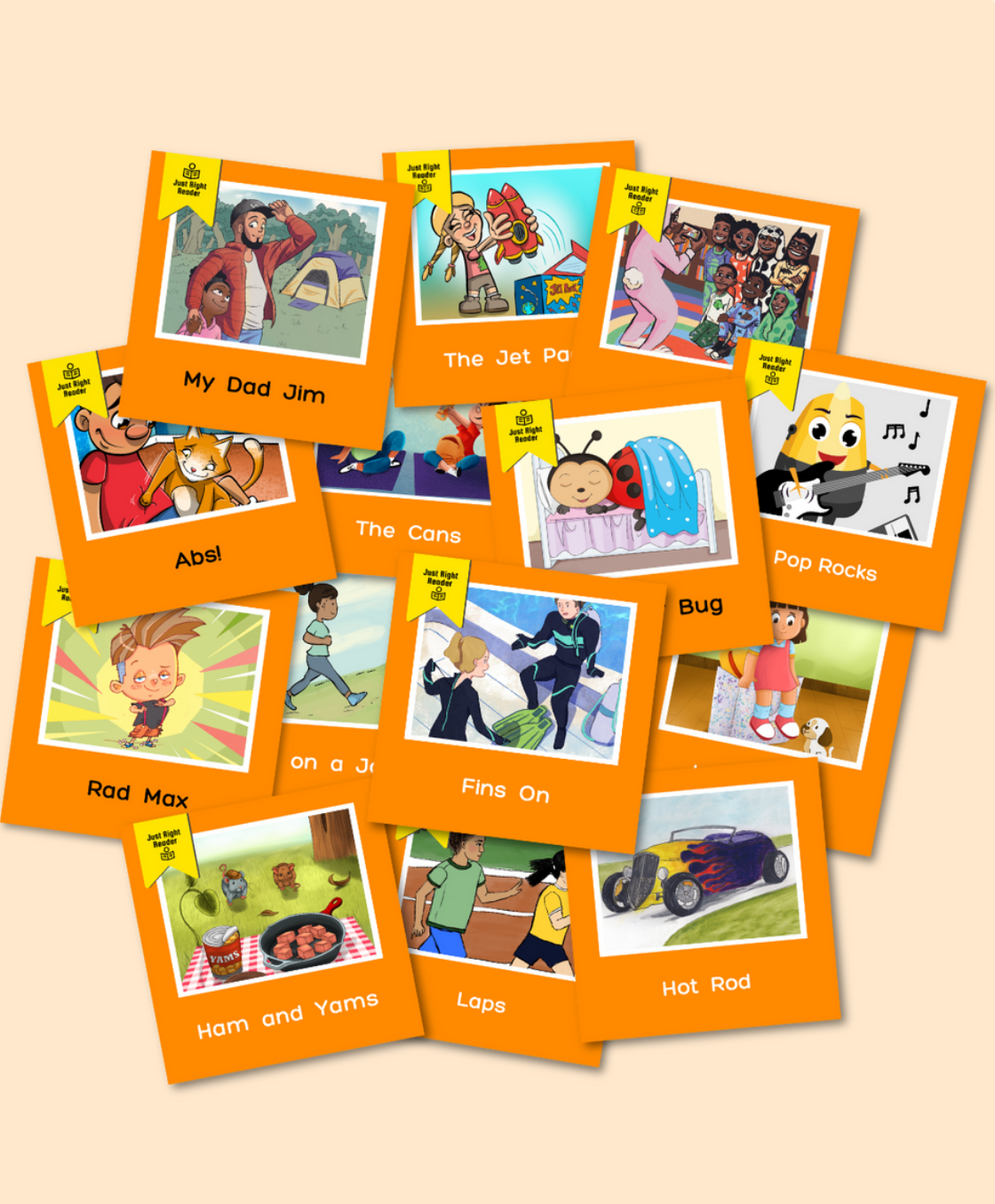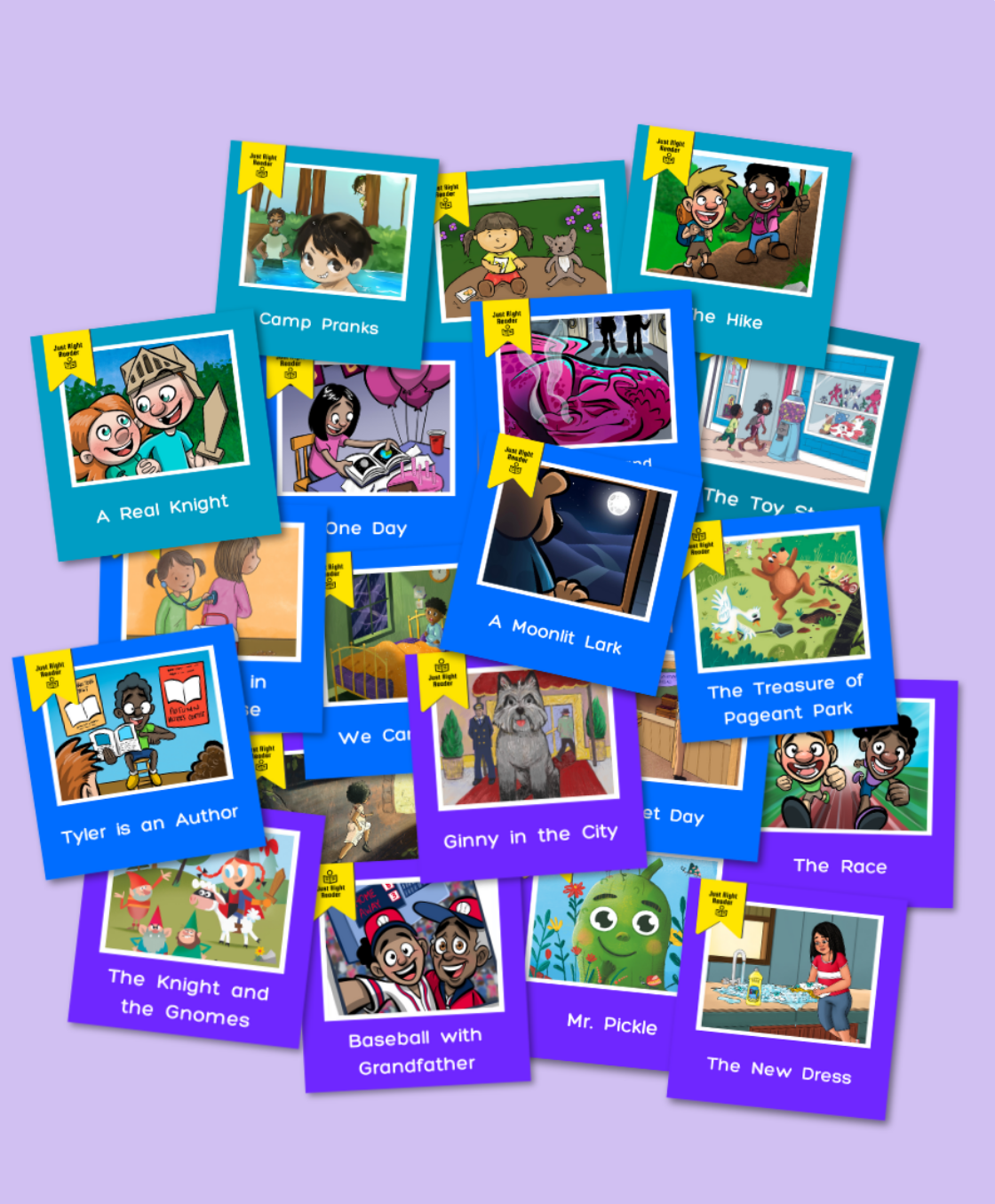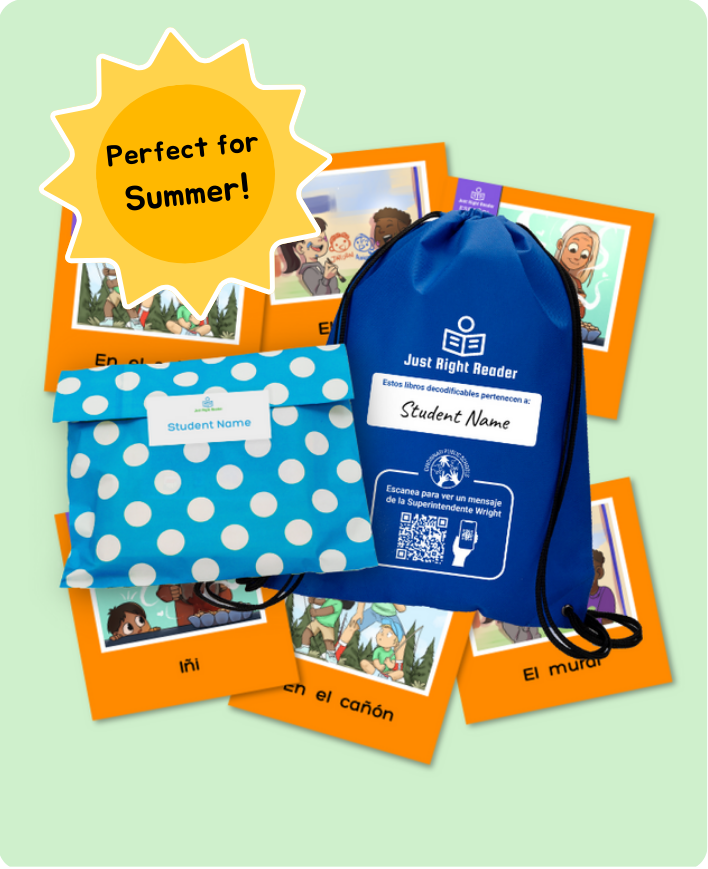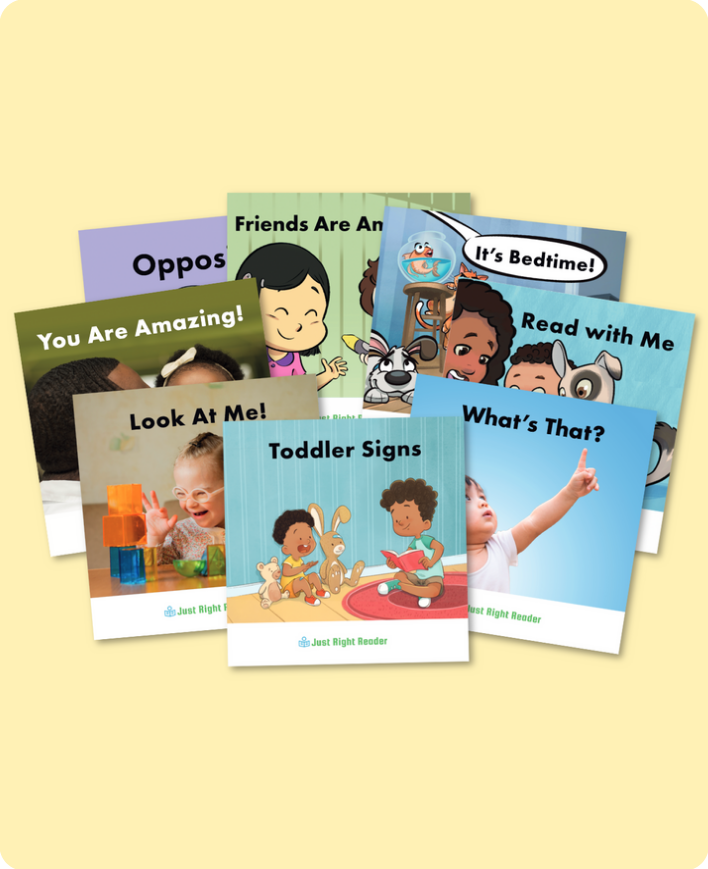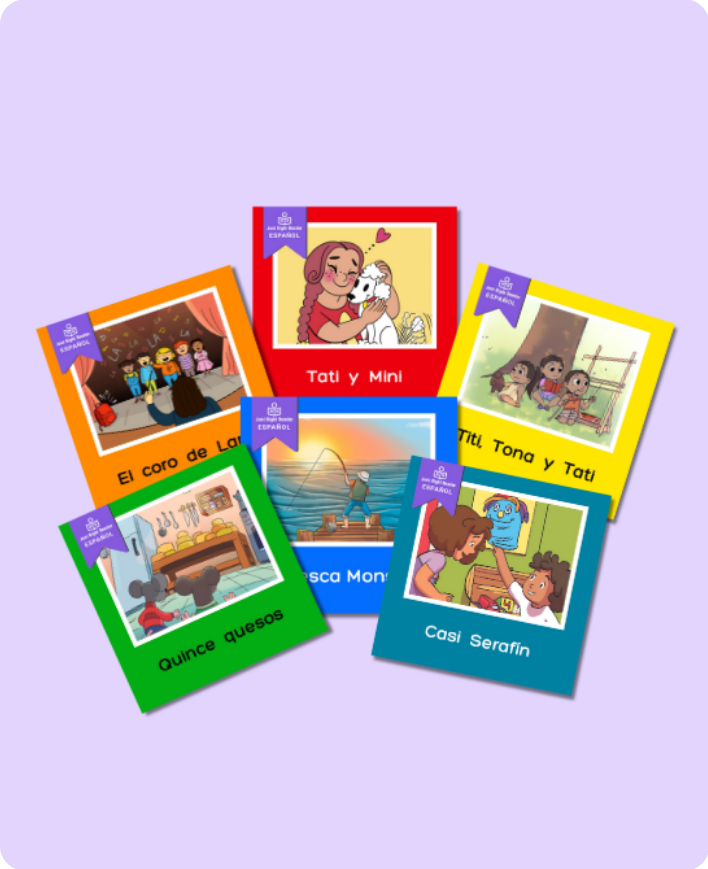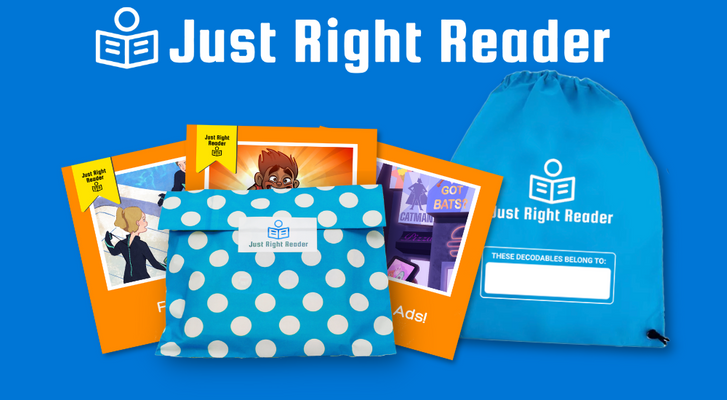
Spanish decodable books are essential for supporting English Language Learners (ELLs), multilingual learners in dual language programs, and Newcomer students of all ages. These evidence-based books offer more than just reading practice; they pave the way to enhanced biliteracy and lasting reading success.
Discover why Spanish decodables transform student learning and language acquisition.
What Does The Research Say?
James Cummins' research, supported by numerous other studies, suggests when children develop academic knowledge and literacy skills in their first language, they also gain insights and skills that can be readily transferred when learning a second language.
Another study, specifically focused on students whose native language is Spanish, found that strong foundational Spanish reading skills played a significant role in English reading development (Relyea, J.E. & Amendum, S.J., 2020).
How Do Spanish Decodable Books Support Biliteracy Development?

Intentional Foundational Skills Practice: Decodable books provide students with numerous opportunities for targeted phonics practice in an authentic reading experience, helping them become confident readers by mastering foundational skills.
Vocabulary Development: Spanish decodable books help students learn new words in a structured way, allowing them to build their vocabulary knowledge and, in turn, strengthen comprehension.
Fluency Practice: Regular practice with decodable books strengthens fluency as students become more familiar with phonetic patterns. Fluent readers can focus on comprehension rather than decoding individual words.
Why Are Spanish Decodables Essential For Schools?

Evidence-Based: Spanish decodables align with the Science of Reading principles and provide explicit and systematic phonics instruction, providing the targeted practice in authentic reading experiences that students need to become confident readers.
Support for Multilingual Students: Research shows that building literacy skills in a student's native language supports cross-linguistic transfer, making the acquisition of English smoother.
Decodables provide targeted phonics support for students, helping them strengthen their foundational literacy skills in Spanish to facilitate easier English acquisition.
Family Engagement: Spanish decodables help schools build strong partnerships with Spanish-speaking families by enabling parents to support literacy development in their native language.
How Can Teachers Integrate Spanish Decodables Into Literacy Instruction?

Native Language Support:
- Spanish decodables help multilingual students develop strong literacy skills in their native language, essential for transferring those skills to English.
- Using materials in a student's native language makes learning more accessible and culturally relevant, increasing engagement.
- Students practice specific comprehension and fluency skills in their native language.
- Students strengthen metacognitive skills by actively thinking about their reading in their native language.
Scaffolded Learning:
- Use Spanish decodables as a stepping stone, helping students gain confidence and fluency in reading Spanish before gradually introducing English texts.
- Teachers focus on cognates (similar words in Spanish and English) to build students' English vocabulary.

Differentiated Instruction:
- Spanish decodables allow teachers to differentiate instruction based on the student's reading needs.
Family Engagement:
- Spanish decodables sent home enable families to support their children’s reading in their native language.
Cross-Linguistic Connections:
- Teachers use Spanish decodables to draw connections between the Spanish and English languages, explaining similarities and differences in phonics, vocabulary, and sentence structure.
Support Multilingual Learners and Dual Language Learners with Just Right Reader Spanish Decodable Books

- Written by native Spanish speakers for an authentic reading experience
- Supportbilingual and dual language programs
- Based on alphabetic principles and phonological knowledge specific to the Spanish language
- Aligned to a rigorous phonics progression specific to the Spanish language
-
Relatable stories, diverse characters, and vibrant illustrations keep kids engaged in reading
Implement Take-Everywhere Decodable Packs for personalized learning, anytime, anywhere.
How to Effectively Implement Just Right Reader Spanish Decodable Books

To maximize the benefits ofSpanish decodables, use the following strategies:
-
Read our Complete Guide to Decodables for an in-depth look at decodable books and why they are critical for teaching reading.
-
Use the Just Right Reader Teacher Resources, including curriculum alignment charts, implementation guides, and lesson plans for each decodable book.
-
Encourage parents and caregivers to support reading development at home by scanning the QR codes on each book to enjoy family-friendly phonics video lessons in multiple languages that reinforce phonics skills and get kids excited about their decodables.
- Read our blog post, Reading Tips for Parents: A Guide for Educators, for tips on communicating the importance of reading at home.
Welcome Newcomer Students and Families to Your District
Just Right Reader supports districts and schools in welcoming Newcomer students and their families by providing evidence-backed books and resources to build foundational literacy skills at any age.
- Board Book School Readiness Packs, for ages 0-3, are aligned to developmental milestones to build literacy skills in the first three years of life.
- Elementary School Readiness Packs, for Pre-K to 5th-grade students, aim to build a strong literacy foundation in English through activities focused on letter recognition and blending letter sounds.
- Middle School & High School Decodable Packs, perfect for Newcomers of all ages learning English, provide multiple entry points to support each student at their current stage of literacy development.
Support literacy development in your district with Newcomer Packs.
Find Just Right Reader Spanish Decodables onThe Reading League’s Decodable Text Resources Listing.
References
Cummins, J. (1981).Schooling and Language Minority Students: Theoretical Framework. Professional Cassette Services.
Relyea, J.E. and Amendum, S.J. (2020), English Reading Growth in Spanish-Speaking Bilingual Students: Moderating Effect of English Proficiency on Cross-Linguistic Influence. Child Dev, 91: 1150-1165. https://doi.org/10.1111/cdev.13288
